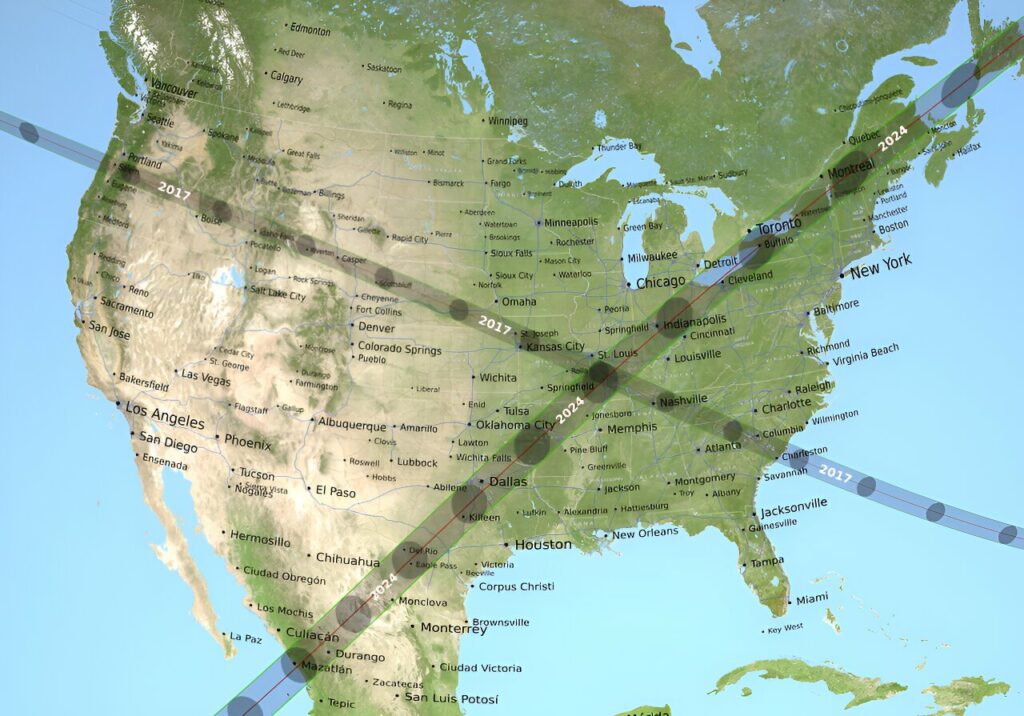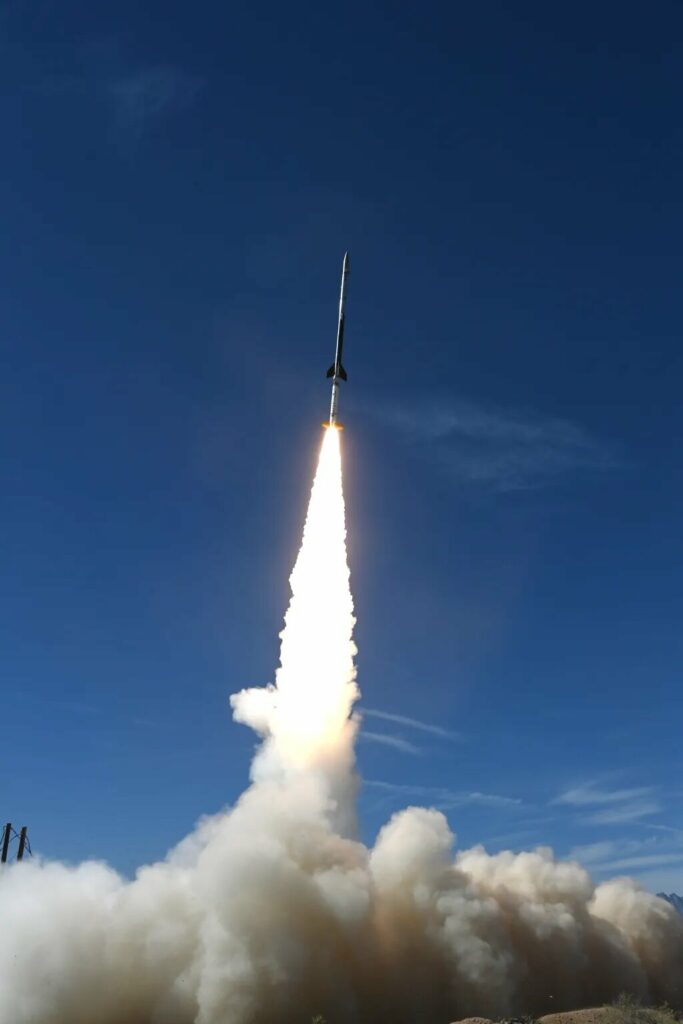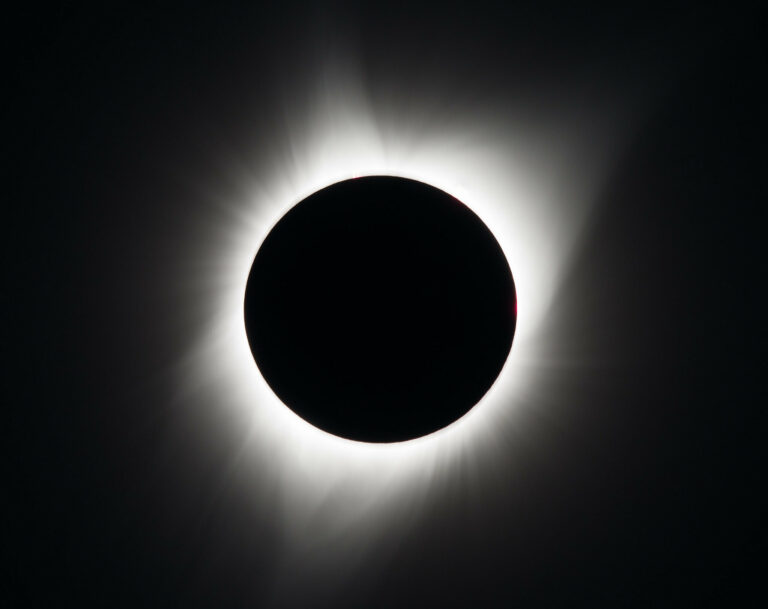Distinguishing Features Between the 2024 Total Solar Eclipse and Its 2017 Predecessor
The United States will witness the moon’s shadow sweeping across its territory on April 8, attracting millions of people who will witness a total solar eclipse. The anticipation of this event brings back memories of the remarkable total solar eclipse that occurred on August 21, 2017.
During the 2017 eclipse, approximately 215 million U.S. adults (88% of the adult population) observed the solar eclipse either directly or through electronic means. They had the opportunity to witness the moon passing in front of the sun, causing a partial or complete blockage of the sun’s bright face. The upcoming eclipse in 2024 holds the potential for even greater excitement, thanks to variations in its path, timing, and the scientific research it will facilitate.
Wider, more populated path
The width of the path of totality, where the moon completely obscures the sun and reveals its corona, will be greater in the upcoming total solar eclipse compared to the eclipse in 2017. This is because the moon’s distance from Earth varies as it orbits around our planet.
In 2017, the moon was slightly farther away from Earth during the total solar eclipse, resulting in a narrower path. The path during that eclipse ranged from approximately 62 to 71 miles in width. However, during the upcoming eclipse in April, the path over North America will span between 108 and 122 miles in width. This means that at any given moment, the upcoming eclipse will cover a larger area.

The 2024 eclipse trajectory will traverse a greater number of cities and densely populated areas compared to the 2017 trajectory. Consequently, a larger number of individuals will have the opportunity to witness the totality of the eclipse. This year, an estimated 31.6 million people reside within the path of totality, whereas in 2017, the number was 12 million. Additionally, an extra 150 million individuals live within a 200-mile radius of the path of totality.
It is important to note that residing within the path of totality is not a prerequisite for observing the eclipse. In April, 99% of individuals residing in the United States will have the chance to witness either a partial or total eclipse from their respective locations. Every contiguous U.S. state, along with certain areas of Alaska and Hawaii, will experience at least a partial solar eclipse.
Longer time in totality
In April, the duration of totality will be longer than it was in 2017. Seven years ago, the longest period of totality occurred near Carbondale, Illinois, lasting for 2 minutes and 42 seconds.
For the upcoming eclipse, the duration of totality will reach up to 4 minutes and 28 seconds in an area approximately 25 minutes northwest of Torreón, Mexico. As the eclipse moves into Texas, the center of the eclipse’s path will experience totality for about 4 minutes and 26 seconds. Durations exceeding 4 minutes can be observed as far north as Economy, Indiana. Even as the eclipse leaves the United States and enters Canada, it will still last up to 3 minutes and 21 seconds.
During any total solar eclipse, the longest duration of totality is found near the center of the path, widthwise, and gradually decreases towards the edges. However, those who wish to witness totality should not worry about being precisely at the center. The time spent in totality decreases gradually until you approach the edge.
Approximately every 11 years, the magnetic field of the sun undergoes a reversal, resulting in a cycle of fluctuating solar activity. This cycle involves periods of increased and decreased solar eruptions, such as solar flares and coronal mass ejections. During the phase known as solar minimum, the sun experiences fewer significant eruptions. Conversely, during solar maximum, the sun becomes more active.
In the year 2017, the sun was approaching solar minimum. Those who witnessed the total eclipse were able to observe the awe-inspiring corona. However, due to the sun’s relative calmness, the streamers flowing into the solar atmosphere were limited to the equatorial regions of the star. This simpler appearance is a result of the sun’s increased magnetic symmetry during solar minimum. On the other hand, during the upcoming eclipse in 2024, the sun will be in or near solar maximum, characterized by a more chaotic magnetic field resembling a tangled hairball. As a result, streamers are likely to be visible throughout the corona. Additionally, viewers will have a greater opportunity to witness prominences, which manifest as bright, pink curls or loops emanating from the sun.
During the eclipse, there is a possibility of witnessing a coronal mass ejection, which refers to a significant release of solar material, if one is fortunate enough with the timing.

Expanded scientific research
Several research initiatives will continue to build upon the research conducted during the 2017 eclipse during the total eclipse in 2024. Led by researchers from various academic institutions, these projects aim to investigate the sun and its impact on Earth using a range of instruments. These instruments include cameras installed on high-altitude research planes, ham radios, and more. Additionally, the instruments that were deployed during the 2023 annular solar eclipse on three sounding rockets will once again be launched during the upcoming total solar eclipse.
Furthermore, two spacecraft, namely NASA’s Parker Solar Probe and ESA (European Space Agency) and NASA’s Solar Orbiter, have been launched since the 2017 solar eclipse. These missions will provide valuable insights into the sun’s corona. As viewers on Earth witness the corona firsthand, it presents an exciting opportunity to combine and compare different perspectives.
This article is republished from PhysORG under a Creative Commons license. Read the original article.
Do not forget to share your opinion with us to provide you with the best posts !




0 Comments